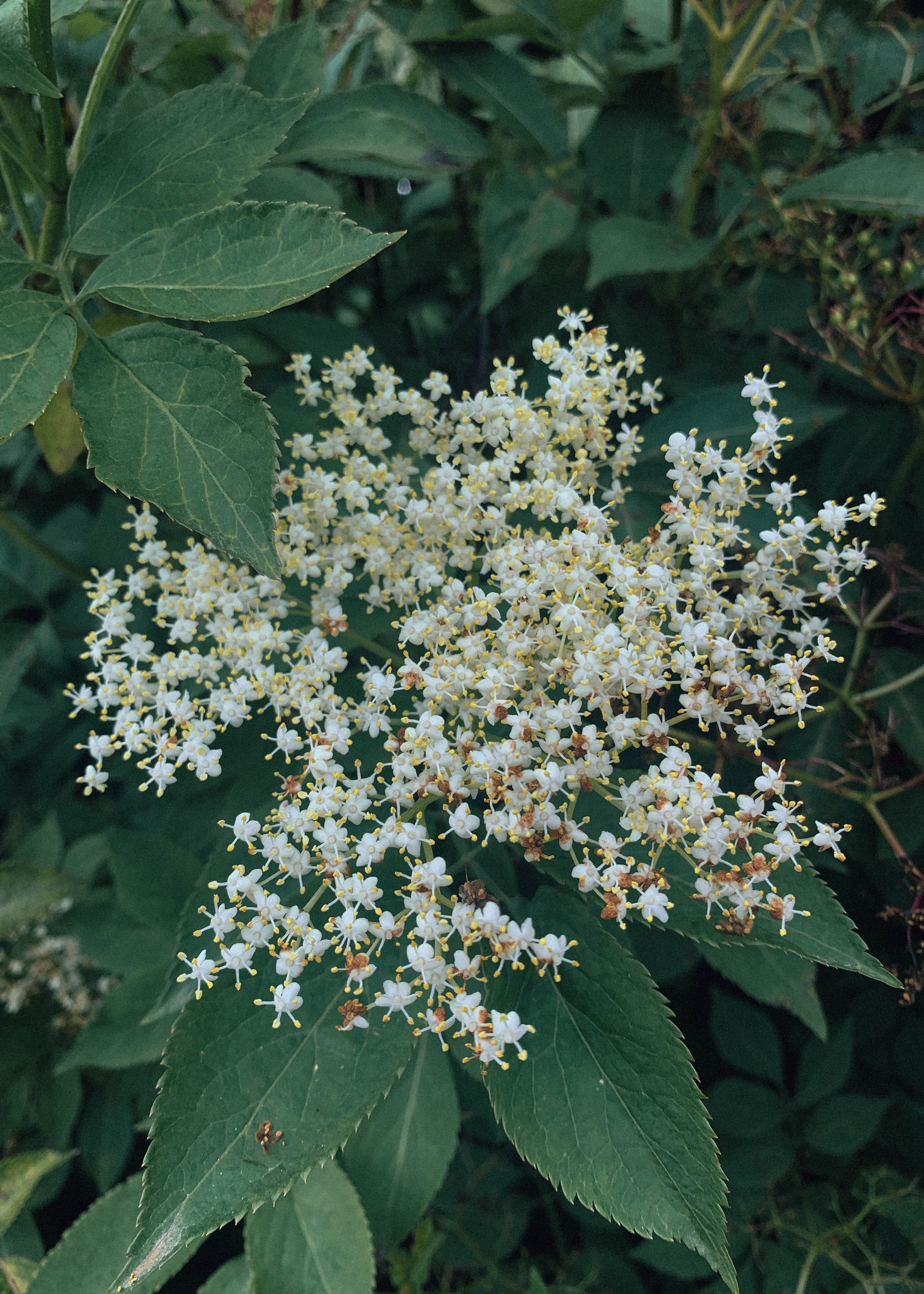HABITATS: Summer Wildflowers on the Long Acre
Buttercups, flag iris and ragged robin
THE ICECREAM MAN
Rum and raisin, vanilla, butter-scotch, walnut, peach:
You would rhyme off the flavours. That was before
They murdered the ice-cream man on the Lisburn Road
And you bought carnations to lay outside his shop.
I named for you all the wild flowers of the Burren
I had seen in one day: thyme, valerian, loosestrife,
Meadowsweet, tway blade, crowfoot, ling, angelica,
Herb robert, marjoram, cow parsley, sundew, vetch,
Mountain avens, wood sage, ragged robin, stitchwort,
Yarrow, lady’s bedstraw, bindweed, bog pimpernel.
+ Michael Longley
Wild carrotflower, knapweed, ox-eye daisy, ragwort and hawksbeard underfoot
Red and white clover underfoot
(Top) The small boreen back in late April. (Bottom) Now in July the same road is darkened and almost impassable with long grasses through the centre of the road and trees touching overhead. The hedgerows are now just passing their peak and exploding with growth.
A few months have now passed since we last wrote about wildflower hunting along this little country boreen close to our home.
Back in April we wrote about the idea and history of the ‘long acre’ and the rich biodiversity to be found in these common, but often overlooked little trackways. We marveled at the arrival of Spring primroses, coltsfoot, cowslips, marsh marigolds, and the beauty of blossoming whitethorn. (You can refresh your memory and read all about “Spring flowers on the Long Acre” here.)
This week, as promised, we revisit the very same little road. And oh my - a lot has changed.
We find darkened densely growing hedgerows, jam-packed with billowing climbing flowers.
The heavy scent of elderflower in June is now replaced by meadowsweet and honeysuckle. Red and white clover, knapweed, and ox-eye daisies grow amongst the grasses. Once rare wild orchids seem to be growing more abundantly with each passing year. Thistles and loosestrife stand tall and proud, unbeaten yet by heavy wind or rain. Tufted vetch appears to win this great summer hedgerow competition - it climbs over all competitors and glows with an almost iridescent purple sheen.
There is not much else to say or to do. I stop, I crouch down, and I look closer. I find myself reciting their “human names” back to them… Loosestrife, ragwort, hawkbit, herb robert, meadowsweet, ragged robin… awkwardly the only way I know how to acknowledge their presence. Their unsung beauty is hiding in plain sight, right there for all those willing to seek it out.
In early July these plants have flowered again and the cycles of nature continue to turn
Back in January these flowerhead were encrusted in frost
Beyond the hedgerows, meadow fields that have not yet been cut for winter silage are exploding with long grasses, buttercups, tufted vetch, ragged robin and meadowsweet.
MEADOWSWEET AND ELDERFLOWER
Once you have learned to identify Meadowsweet you will not mistake it. The smell of this plant is so distinctive you will not forget it. Now in July the smell of meadowsweet fills the air on a warms summers evening.
The last of the Elderflower is now dying back - June is really its moment. Meadowsweet and Elderflower only overlap and mingle together in our hedgerows for a few short days in early July. For the beginner, the best way to tell Elderflower and Meadowsweet apart is to remember that Elderflower is found on the branches of Elder trees. Meadowsweet, on the other hand, grows up from the ground. In time they will be very easy to tell apart using only your nose - as each has a distinctive and unforgettable smell.
CLOVERS
Red clover
White clover
WILD ORCHIDS
A White Spotted Orchid
Is this a Flecked Marsh Orchid growing along a roadside in County Mayo?
Common Spotted Orchid
WILDFLOWER CARROT
OXEYE DAISY
Ox-eye daisy and knapweed grow side by side along the roadside
KNAPWEED AND THISTLE
Thistles can be best identified by their prickly, sharply pointed leaves
Knapweed, a first this could appear thistle-like, but notice the simpler, non-prickly, leaf shape
LOOSESTRIFE
Purple loosestrife, confusingly not related at all to yellow loosestrife
CLIMBING PLANTS
Glowing purple tufted vetch, winning the hedgerow competition
Sweet scented honeysuckle winning the scented wildflower competition
HAWKSBIT
Yellow hawksbit
Notes
You might also like: Spring Wildflowers on the Long Acre
The very best wildflower identification guides: The Wildflowers of Ireland
Listen to Micheal Longley read The Man: here
Civic voices for peace: Michael Longley talking about the meaning behind his poem ‘The Icecream Man” : here


























